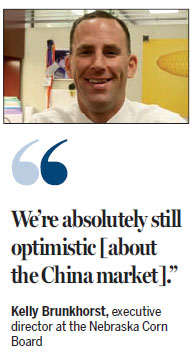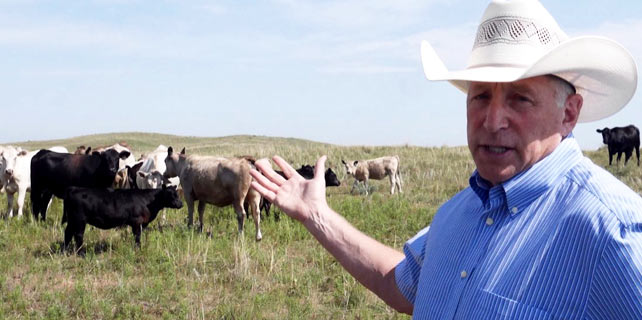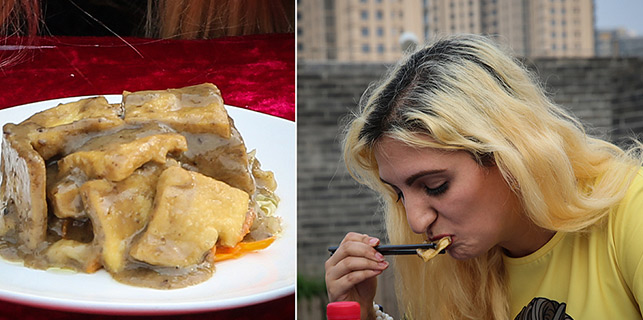With beef racked up, the Cornhusker State now looks to boost namesake crop
With the resumption of US beef trade with China, Nebraska, the No. 1 exporter of beef and beef products in the US, is optimistic that its biggest agriculture export - corn - will benefit.
The state suffered a huge blow in 2014 when China banned genetically modified corn from the US. Prior to the ban, the state was shipping millions of metric tons of corn to the country, but then dropped to 150,000 to 200,000 tons last year.
"When we talk about corn, we look at corn in all forms: it may be a raw product corn or it may be the value-added beef industry," said Kelly Brunkhorst, executive director at the Nebraska Corn Board.
"Nebraska's blessed with being the No. 1 cattle-on-feed state, and having that strong beef industry" is a "fantastic opportunity to move corn as a value-added product into China, along with building upon what that means for corn in a raw form," he said.
The first shipment of US beef to China left Omaha, Nebraska, on June 14, headed on a one-way flight to customers in Shanghai, and the more than 6 million cattle in Nebraska feed on corn and corn byproducts. Cattle consume feed comprised of roughage, raw corn, corn sweetener byproduct, and ethanol byproduct, also known as distillers grains.

"A byproduct or co-product of that ethanol process is distillers grains, and we use it here in great quantities and it's found to be a great feed product too," said Brunkhorst.
"It has the opportunity to fill into rations and displaced corn, sorghum, and other products [and comes at a] cheaper cost relative to those other products in the rations," he said.
Both corn and beef work in tandem with each other, said Nebraska's Governor Pete Ricketts.
"One of the benefits we have here is what we call a 'golden triangle' between the corn that we produce, our ethanol plants - which create fuel, and in fact Nebraska supplies about 1.5 percent of the overall liquid fuel supply for the United States - and a byproduct of that ethanol process, the distillers grains that then go into feeding our cattle," he told China Daily in an interview.
"That's a great synergistic way we leverage our corn and add value to our commodities we produce here, to help create the best products in the world," he said.
The Cornhusker State produced nearly 1.7 billion bushels of corn last year, ranking behind Iowa and Illinois as the third-largest corn producer in the US.
"Obviously [the ban] put pressure on our markets, but also provided us opportunities. How do we look at other countries and opportunities to build relationships and move new product into their markets, but also how do we work with our current customer base and build out those markets?" said Brunkhorst.
About 95 percent to 97 percent of corn produced in Nebraska today is genetically-modified corn, but most of it consists of varieties that are approved in China and other markets, Brunkhorst said.
The industry has filled the gap by exporting distilled grains and other crops like sorghum and other energy and protein products.
Still, the agricultural sector in Nebraska is hopeful about eventually building back its market share in China. It works with the US trade groups to continue dialogue with Chinese counterparts.
"We're absolutely still optimistic [about the China market]," said Brunkhorst. "We keep staff there - via the US Grains Council and the US Meat Export Federation - to continue those conversations, realizing that whole area of China and Southeast Asia have huge potential for our growers in the future."
amyhe@chinadailyusa.com
(China Daily USA 07/17/2017 page16)
















